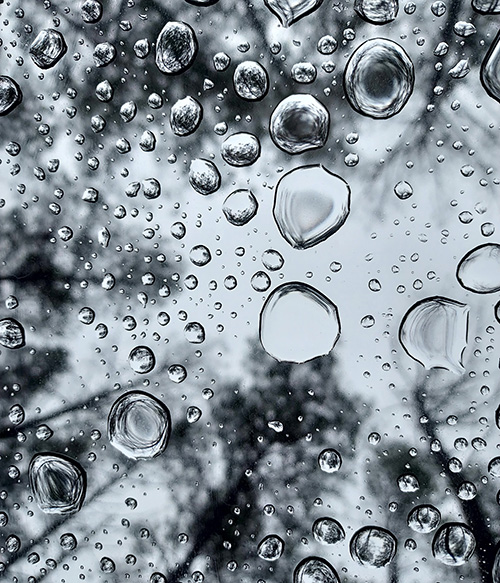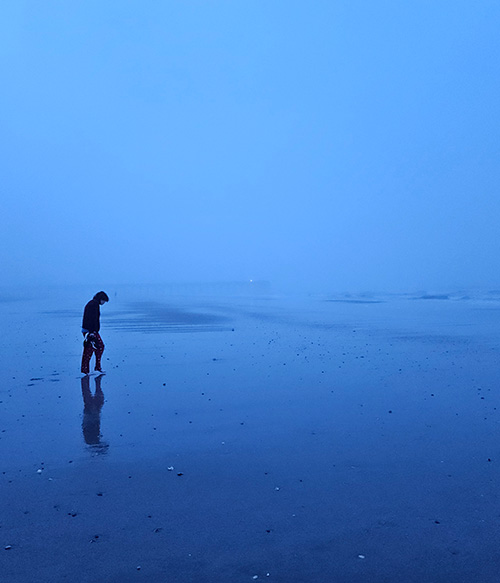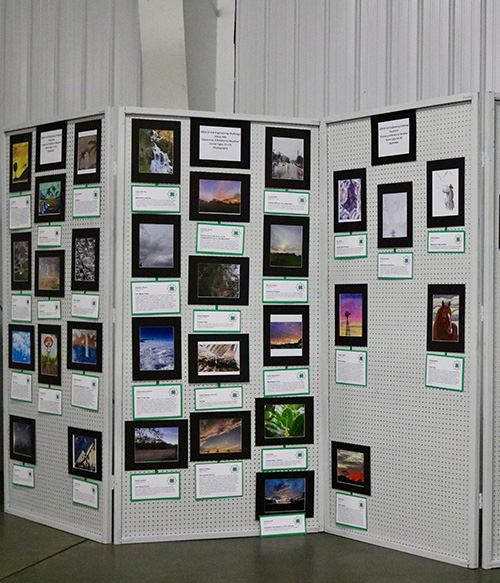About the Visual Arts Challenge
Join us for the Visual Arts Challenge! Sometimes, science and art meet in the middle. Visual representations of science and technology provide a valuable connection between scientists, artists, and the public. Through the Visual Arts Challenge, we hope to draw interest to STEAM fields using visually captivating artwork. The Visual Arts Challenge is for creative students who are interested in demonstrating science through art.


Challenge Objectives
-
Youth communicate and present ideas effectively.
-
Youth present scientific concepts creatively.
- Youth demonstrate their knowledge of art concepts including interpretation of the category theme, creativity, originality, and composition.
Challenge Rules
Individual
This challenge is for individuals only.
Age Divisions | Cloverleaf (9-11 years) | Junior (12-13 years) | Senior (14-18 years)
Age is calculated as of January 1, 2025. If an age division within a photograph category has three participants or less, the age divisions may be combined.
Materials | Specifications | Time
Participants in this challenge do not have to be present to win but are welcome to attend the event to compete in other challenges or attend the awards ceremony. Any prizes not picked up at the event will be sent to the local County Extension Office for distribution. Artwork will be showcased at the 4-H Engineering Challenge event, along with category, theme, title, and other related information. Artwork and ribbons should remain on display until 2:30pm. Any artwork not collected by the end of the event will be returned to the local County Extension Office of the participant. Artwork must be submitted online by January 24th at 11:59 EST.
A maximum of three (3) entries per person are allowed (e.g. 1 photo & 1 illustration & 1 AI generated image) with an additional payment of $5 for the second entry and $5 for the third entry during online registration.
All Entries must be accompanied by a short descriptive text that explains the science behind the art in terms of being understandable to a non-scientific audience. All submission materials must be in English. Text descriptions should not exceed 100 words in total.
Categories (Select One)
Photographs/Pictures - This category invites participants to submit photographs or images that showcase the annual STEM theme, whether captured through traditional film or digital photography, or through specialized scientific equipment like electron microscopes, telescopes, or sensors. This includes both natural and man-made subjects, as well as scientific images that reveal phenomena not visible to the naked eye. Participants are encouraged to use their creativity and technical skills to capture and present the essence of the theme, whether through nature, technology, or scientific exploration.
Illustrations/Drawings/Paintings - This category invites participants to express the annual theme through hand-drawn or painted artwork. Illustrations and drawings in this category are created to convey abstract ideas, visualize scientific concepts, or recreate phenomena that may not be visible or easily understood. The goal is to communicate a STEM-related idea through visual representation, using techniques such as pencil, ink, watercolor, acrylics, or other traditional mediums. These artworks should not include any text, relying entirely on imagery to convey meaning.
AI (Artificial Intelligence) Generated Images* - New for 2025! AI-generated art is artwork that is created with the help of artificial intelligence, where computers and algorithms play a key role in the creative process. To create AI art, artists use programs or tools that are powered by machine learning—these are algorithms that "learn" from large amounts of data, such as images or styles, and use that knowledge to generate new visuals. Some common tools allow artists to input certain keywords or upload images, and the AI then creates new artwork based on that information. The artist may guide the process by adjusting settings or providing specific prompts, but the AI helps by suggesting new ideas, styles, or combinations that the artist might not have thought of. This blend of technology and creativity opens up exciting possibilities, allowing young artists to experiment with new forms of art that are only possible through the use of AI.
*Note: New for 2025, there is no category for computer assisted illustration/drawings category. This category has been replaced by AI Generated Images.
2025 Theme - Agriculture
Regardless of category, entries for photography/picture, illustration/drawing/painting, or AI generated images should focus on science as it relates to the annual theme.
The 2025 challenge theme is agriculture, a vital part of our world that touches every aspect of life. Agriculture encompasses the practices and technologies involved in growing crops, raising animals, and producing food. It also includes the science and innovations that make farming more sustainable, efficient, and connected to the environment. Through art, participants are encouraged to explore and express how agriculture shapes our communities, landscapes, and future. Whether highlighting traditional farming techniques, modern agricultural technology, or the natural beauty of crops and fields, this year's competition invites young artists to visualize the importance of agriculture and its role in feeding the world and sustaining our planet.
Judging
Metric | Placing | Tie Breaker
Entries will be judged considering both the art and the text description. The criteria for judging include:
-
Visual Effect. The visualization successfully conveys the research to its intended audience enabling new scientific insight. It summarizes and logically expresses ideas. The entry demonstrates exceptional artistic talent and use of the seven artistic fundamentals in design (color, value, line, texture, shape, form and space), plus a command of the principles of design (balance, emphasis, harmony, proportion, variety, gradation, movement and rhythm).
-
Effective Communication. The visualization portrays the phenomena, principles, concepts and research context effectively and clearly. The entry exhibits sound knowledge and application of technology used as well as properly applying scientific methods to the identification, experimentation and conclusion of the visualization. It also reflects current scientific consensus. The presentation is clear, and all the parts are integrated to make it a dynamic whole
-
Innovation. The visualization is unique with emphasis on new methods and insights to illustrate the research and/or to tell the story. It has an individual voice, vitality and energy. It demonstrates original ideas or combines several simple ideas, and uniquely assesses the research.
A panel of judges will select 1st through 3rd place winners from Cloverleaf, Junior, and Senior age divisions in each submission category based on the written description of the subject, visual effect, and innovation. We reserve the right to change the category of an entry if we believe the entry is more appropriate in a different category. In addition, if an age division within a category has three participants or less, the age divisions may be combined. Entrants retain all copyrights and equivalent rights but give Clemson University Cooperative Extension nonexclusive rights to use their names, likenesses, quotes, and submissions for educational publicity and/or promotional purposes.
Submission
Artwork in all categories should be submitted by January 24th at 11:59 EST using the online submission form. For all submissions, please provide a high-quality digital photograph or high-resolution scan of the work. Judging will take place prior to the event and artwork will be displayed with ribbons at the event on February 11, 2025. Artwork and ribbons should remain on display until 2:30pm. Any artwork not collected by the end of the event will be returned to the local County Extension Office of the participant.
Submission Guidelines - Photography
-
A single photograph or digital photo will be accepted. (No collages)
-
Photos may be in color or black & white.
-
No edited, digitally enhanced, or altered photos.
-
Digital or Film entries will be printed for display in 8X10 size.
-
Photos must be the original work of the youth submitting them.
-
Photo must have been taken in South Carolina since January 2024 (approximately within 1 year from the competition date) by the youth participant entering the contest.
-
Photos must have a title. The title should not appear on the front of the picture.
-
Each submission should include date, location, type of camera or phone used.
Submission Guidelines - Illustrations/Drawings/Paintings
-
Illustrations must be the original work of the youth submitting them.
-
Entries will be printed for display in 8x10 size.
-
Artwork must have a title that will be provided on the submission form.
-
Include in the description the medium represented (colored pencil, charcoal, watercolor, oil on canvas, computer generated graphics, etc.).
Submission Guidelines - AI Generated Images
In the AI-Generated Art category, participants will create artwork with the help of AI tools or programs. The artwork should showcase creativity and innovation, using AI to support the artistic process. When creating your work, you'll guide the AI by providing instructions, ideas, or prompts, but the final artwork should reflect your personal vision. Make sure your piece connects to the theme of the competition, which changes each year, and be sure to explain how AI was used in the creative process on the submission form.
Follow these guidelines for a successful submission:
-
Only one digital submission will be accepted for each entry.
-
Entries will be printed for display in 8X10 size.
-
Submissions can be created with the help of any generative AI and/or enhanced using AI tools of your choice.
-
The artwork must be entirely original, with no use of AI to replicate existing work.
-
File types accepted include JPG, PNG, GIF.
Contact Information
If you have any questions, please reach out to the Challenge Facilitator – Hillary Winburn.



